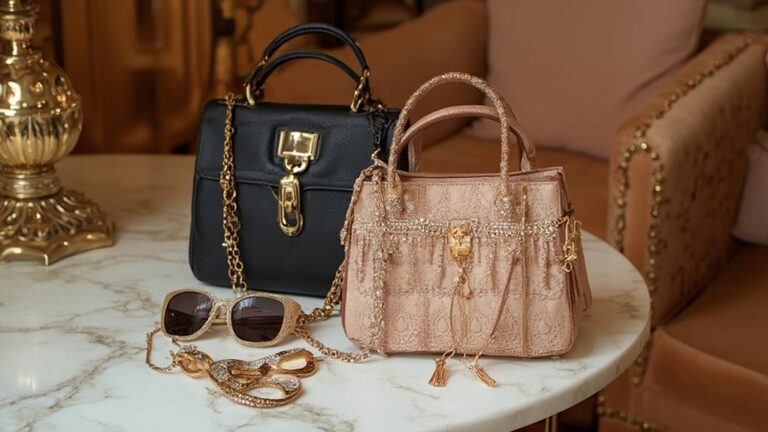It's interesting that you stumbled upon this guide just as you're wondering how to spell "beautiful." This word often trips people up with its tricky sequence of vowels. You might find yourself asking, "Is it 'butiful' or 'beutiful'?" To avoid these common errors, remember the mnemonic "Be a utiful person!" which highlights the correct order of letters. But there's more to mastering this word than just memorization. Curious about further tips and techniques to guarantee you never misspell "beautiful" again? Let's explore some practical strategies that might surprise you.
Correct Spelling of Beautiful
It's crucial to know the correct spelling of "beautiful," as it's a word frequently used to describe many things in life. The correct spelling of beautiful is b-e-a-u-t-i-f-u-l, with the vowels E-A-U forming the first syllable. This particular combination can trip you up, but there's a handy mnemonic to keep in mind: "Be a utiful person!" This phrase helps emphasize the correct vowel order, ensuring you remember it accurately.
Many people often misspell beautiful as "beutiful," "butiful," or "beatiful," revealing confusion with the letter sequence. By being aware of these common mistakes, you can take steps to avoid them. Additionally, don't forget the frequently seen errors like "beautifull" or "beautifu." Recognizing these typical misspellings can greatly improve your spelling skills.
To further assist you, consider using grammar checkers like LanguageTool or ProWritingAid. These tools are excellent for catching and correcting spelling errors, enhancing both your writing clarity and confidence.
Definition of Beautiful
When you think of the word "beautiful," you're likely considering something that brings aesthetic pleasure, like a breathtaking sunset or a perfectly composed piece of music.
This term doesn't just appeal to your senses; it also evokes an emotional and intellectual response, making you appreciate the deeper qualities of what you're observing.
Whether it's a person, an object, or an experience, "beautiful" captures a charm and impressive appearance that resonates with you on multiple levels.
Aesthetic Pleasure Description
What exactly makes something beautiful? Beauty is more than skin deep; it's an experience that delights your senses and evokes admiration. The spelling of beautiful might be straightforward, but its definition encompasses a broad spectrum of qualities. Beautiful is an adjective describing attributes that please the senses and stir emotional responses. It's rooted in the Old French word "beaute," showing its deep historical significance.
Imagine the things that can be described as beautiful:
- Stunning landscapes that take your breath away
- Enchanting performances that leave you spellbound
- Intricate works of art that invite you to look closer
- Nature's simple wonders, like a vibrant sunset or a blooming flower
Your perception of beauty is subjective, shaped by cultural, personal, and societal influences. What you find beautiful might differ from someone else's view, but it's this diversity that enriches our shared experience.
Whether it's a mesmerizing piece of art or the serene beauty of nature, recognizing beauty helps you connect with the world and others around you. Understanding the spelling of beautiful is just the beginning; appreciating its depth and variety brings you closer to a collective sense of belonging.
Emotional and Intellectual Appeal
How does something move beyond just being visually pleasing to touch your heart and mind? When you encounter something truly beautiful, it transcends mere appearance and speaks to your soul. You might find yourself lost in thought, inspired by the intricate details of a painting or the way a piece of music stirs memories long forgotten.
Beauty, in its essence, is an emotional and intellectual experience.
Think about the last time you experienced something so beautiful you'd to pause and appreciate it. It wasn't just about what you saw; it was about how it made you feel and think. Beautiful things often evoke admiration and stimulate deep reflection.
Whether it's the natural elegance of a sunset or the profound simplicity of a heartfelt poem, beauty has the power to connect you to your emotions and intellect.
Remember how to spell the word "beautiful" as it often embodies qualities that are universally appreciated but uniquely interpreted. Despite cultural and individual differences, the concept of beauty consistently bridges the gap between aesthetic pleasure and emotional resonance, enriching your human experience.
Embrace beauty in all its forms and let it touch your heart and mind.
Synonyms for Beautiful
Exploring synonyms for "beautiful" can enrich your vocabulary and enhance your descriptions. Using varied language helps you paint more vivid pictures, making your writing more engaging and relatable.
Here are some powerful synonyms for beautiful:
- Gorgeous: This conveys an impressive appearance and is often used to highlight visual appeal. Think of a sunset that leaves you in awe or someone dressed elegantly for a special occasion.
- Stunning: This suggests a breathtaking quality, frequently used to describe landscapes or people that leave a lasting impression. Imagine a panoramic mountain view or a person whose beauty is simply overwhelming.
- Ravishing: This implies an alluring beauty, often used in literary contexts. Picture a character in a novel who enchants the imagination with their enchanting presence.
- Alluring: This suggests an attractive charm, perfect for describing people or objects that draw interest or admiration. Think of a charming smile or a piece of art that catches your eye.
Using these synonyms not only broadens your vocabulary but also makes your writing more intriguing. By choosing the right word, you can convey the exact shade of beauty you want to express, connecting more deeply with your audience.
Antonyms of Beautiful
When contrasting something beautiful, you might find yourself looking for the right words to describe its opposite. The most straightforward antonym of beautiful is "ugly," a term that denotes a lack of beauty and is often used to describe something visually displeasing.
If you're searching for a slightly softer term, "unattractive" might be a better choice. It refers to someone or something that lacks physical appeal or charm, without the harshness that "ugly" can sometimes convey.
Another antonym of beautiful you might consider is "repulsive." This word indicates a strong aversion to something considered ugly or distasteful, often eliciting a powerful emotional reaction.
Similarly, "unsightly" is an excellent option when you need to describe something that's visually unpleasant or not easy on the eyes, without the intense negativity of "repulsive."
Lastly, "hideous" is a word that conveys an extreme level of ugliness, often evoking strong negative reactions to appearance.
Using these antonyms can help you articulate the absence of beauty with precision and clarity, ensuring your descriptions resonate with those seeking a sense of belonging and understanding.
Common Misspellings
Spelling "beautiful" correctly can be challenging, given its unique letter combination and phonetic structure. It's no surprise that many people stumble over this word, leading to common misspellings that can trip you up. Recognizing these frequent errors can help you feel more confident and connected as part of a community aiming for accuracy.
Here are some of the most common misspellings:
- "butifl" – This accounts for 31.9% of mistakes.
- "butiful" – This spelling trips up 12.2% of people.
- "blutifl" – This error appears in 7.8% of misspellings.
- "beautifull" – Often mistaken, this accounts for 5.2% of errors.
You might also encounter "beatiful" at 5.0%, a close contender in the list of common misspellings. Less frequently, but still notable, are "beutiful" at 2.9%, "beautifu" at 2.3%, and "beautful" at 1.2%.
Being aware of these variations can help you avoid them in your writing. Understanding these common errors is a step towards mastering the spelling of "beautiful."
Tips for Accurate Spelling
Many people find spelling "beautiful" correctly a challenging task, but with a few practical tips, you can master it effortlessly. One effective method is to use the mnemonic "Be a utiful person!" This phrase helps you remember the correct vowel sequence, E-A-U.
It's also beneficial to familiarize yourself with common misspellings like "beutiful" and "butiful." Recognizing these frequent errors can help you avoid them in your own writing.
Break the word down into its syllables: beau-ti-ful. Focusing on the letter order within each syllable makes it easier to spell correctly.
To further improve your spelling, use tools like LanguageTool or Ginger. These grammar and spell-check tools are great for catching errors you might overlook.
Another helpful technique is repetition. Practice writing "beautiful" multiple times or say the letters aloud to reinforce your memory.
Frequently Asked Questions
Is Beautiful Spelled One L or Two?
You're likely experiencing spelling confusion. "Beautiful" is spelled with two Ls, not one. Remember, mnemonics like "Be a utiful person!" can help. Spelling it correctly guarantees you're understood and part of the informed community.
Are There Different Ways to Spell Beautiful?
You're probably drowning in a sea of alternative spellings! There aren't any correct variations; it's always "beautiful." Common misspellings include "butifl" and "beatiful." Use tools like grammar checkers to guarantee you get it right.
How Do You Remember to Spell Beautiful?
You can remember to spell "beautiful" by using memory techniques like mnemonics. Think "Be a utiful person!" or recall Jim Carrey's "b-e-a beautiful." Practice spelling aloud and use visual aids to reinforce retention.
How Do You Spell Beautiful in Different Ways?
You can't spell "beautiful" in alternative ways and still be correct. Stick to B-E-A-U-T-I-F-U-L to guarantee clarity. Remember, everyone makes spelling mistakes, but using tools like Ginger can help you get it right.







